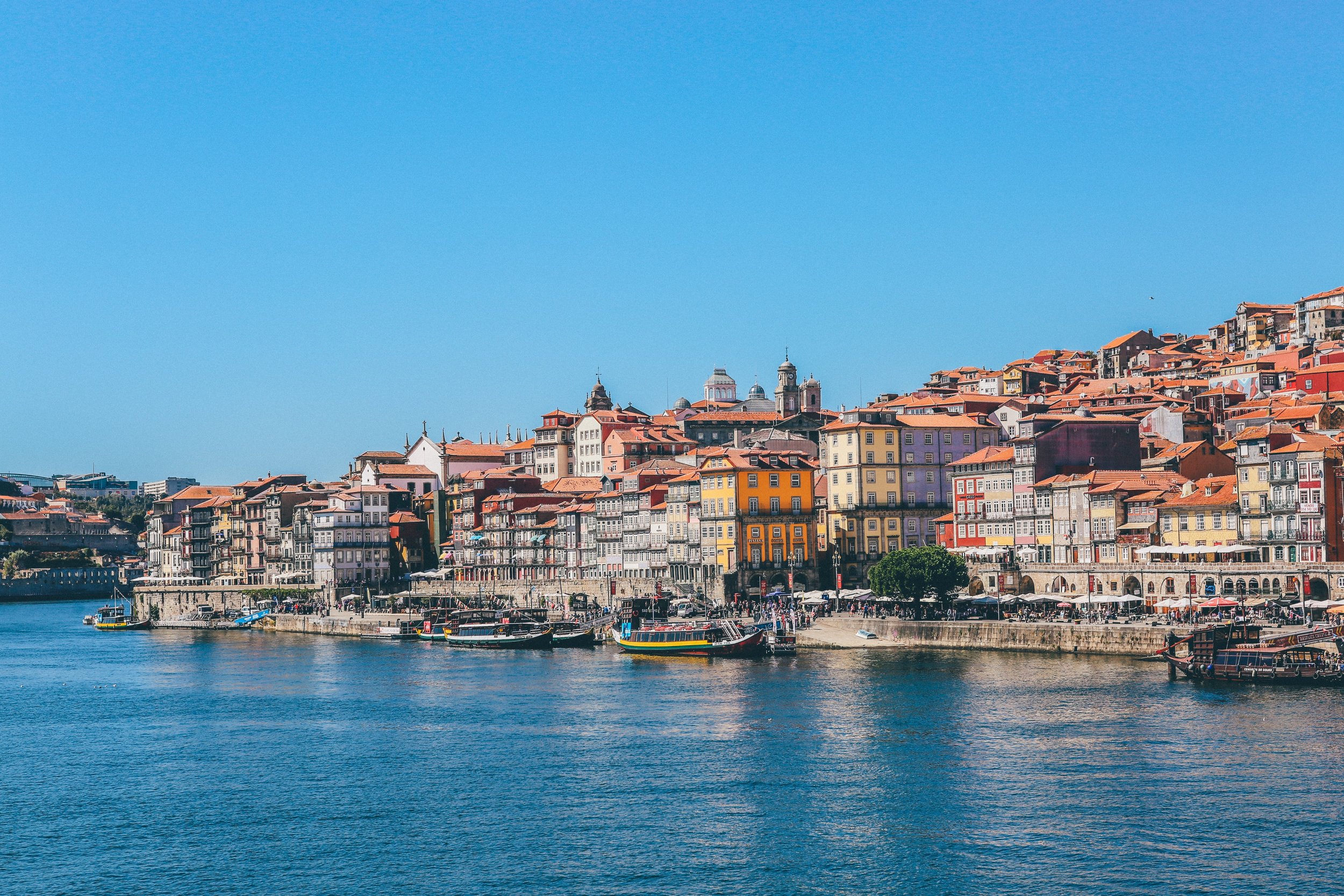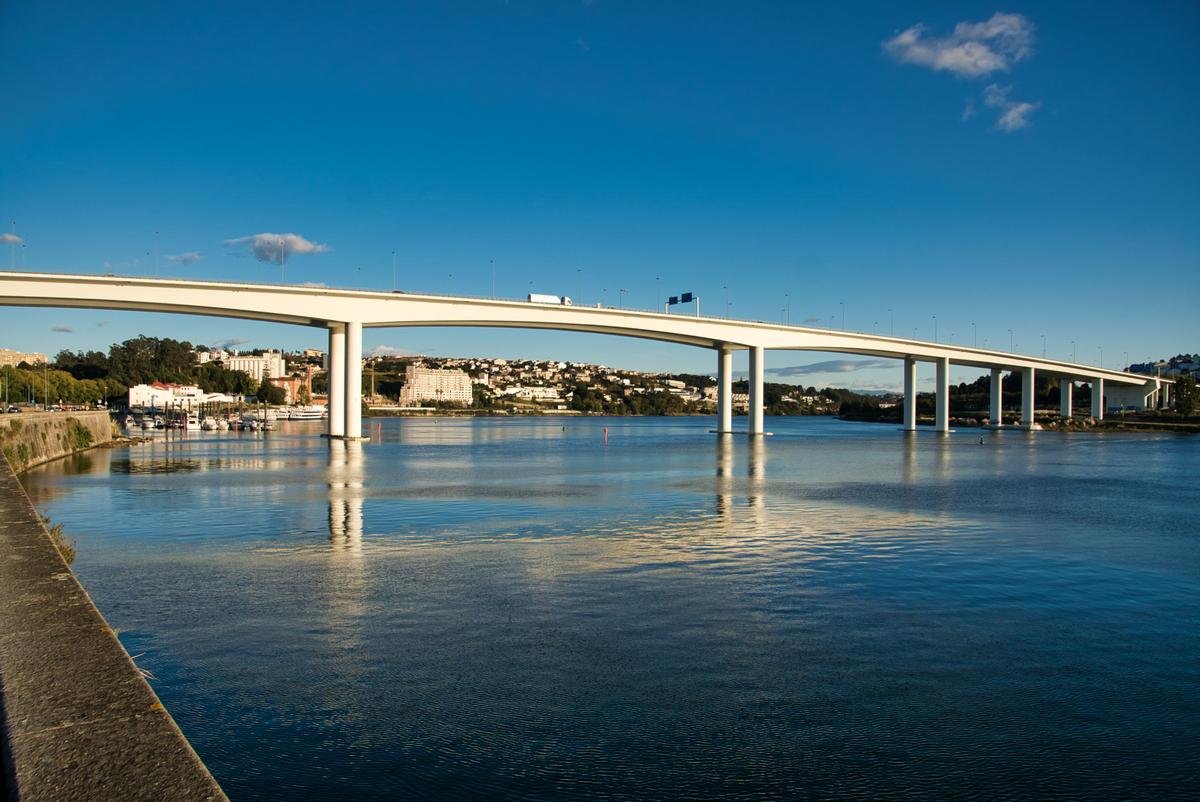Nestled along the banks of the Douro River in northern Portugal is Porto, Portugal's second-largest city. A place where history, culture, and the exquisite blend of old-world charm and modern delights come together to create an unforgettable experience.
As you explore the cobbled streets and scenic riverbanks, you'll quickly discover that Porto is not just a destination; it's a tapestry of wonders waiting to be unraveled. From the UNESCO World Heritage-listed historic city center to the world-renowned flavors of Port wine, and from the iconic bridges that span the Douro River to the captivating beauty of Livraria Lello and the grandeur of São Bento train station, each facet of this city offers a glimpse into its unique character.
Join us as we embark on a journey to uncover the "5 Must-Know Wonders of Porto," where every corner tells a story, and every experience is a treasure waiting to be found.
1. Porto’s historic center is a UNESCO World Heritage Site. Porto is one of Portugal's oldest cities, with a history dating back to Roman times. Its historical center, the Ribeira District, is filled with narrow winding streets, colorful buildings, and historic landmarks. This historic neighborhood along the riverfront is a must-visit. Its colorful buildings, narrow streets, and vibrant atmosphere make it an excellent place to explore, dine, and soak in the local culture.
Porto's UNESCO World Heritage Site designation, granted in 1996, celebrates the rich historical and cultural significance of its historic center, the “Ribeira.“ This designation is a testament to the architectural diversity found within this captivating area, where centuries of styles, from medieval to neoclassical, harmoniously coexist. Porto's deep-rooted history, dating back to Roman times, is intricately linked to Portugal's maritime past, as it served as a crucial trading hub and a launching point for historic exploratory journeys.
Beyond architecture, the UNESCO status recognizes Porto as a cultural epicenter, home to a thriving arts scene, literature, and music. Stringent preservation efforts have been put in place to protect the historical integrity of the area, ensuring that new developments seamlessly blend with the old. The UNESCO recognition has not only preserved Porto's architectural charm but has also elevated its status as a vibrant tourist destination, with travelers drawn to the area's charm, culinary delights, and cultural attractions.
2. Porto is famous for its production of Port wine. You can visit numerous wine cellars in Vila Nova de Gaia, just across the river from Porto, where you can learn about the winemaking process and enjoy tastings of this renowned beverage. The name “Porto” originated from a Portuguese word that means “red” and refers to the intense red hue of fortified wine. The Douro Valley is the world’s most delimited wine region, known for its vineyards and natural beauty.
Port wine, known as Porto or Vinho do Porto, boasts a rich history intricately tied to the city of Porto and the picturesque Douro Valley in Portugal. Its origins trace back to the late 17th century when British merchants sought alternatives to French wines during times of conflict. They turned to the wines of the Douro region, which, to withstand long sea journeys to England, were fortified with brandy during fermentation. This fortification process not only preserved the wine but also imparted its distinctive sweet and robust character. Porto, situated along the Douro River, emerged as the epicenter of Port wine production and export. In the 18th century, the efforts of Marques de Pombal helped regulate and elevate the industry.
Today, there are various styles of Port, including Vintage Port, Tawny Port, Ruby Port, and White Port, each offering a unique flavor profile and aging process. The terraced vineyards of the Douro Valley, designated a UNESCO World Heritage Site, provide the grapes for this world-renowned wine, celebrated for its quality and craftsmanship. With its traditions, rituals, and international recognition, Port wine continues to be a symbol of Portugal's winemaking heritage and a cherished delight for wine enthusiasts worldwide.
3. Porto is often referred to as the "City of Bridges." Porto's iconic structures have become symbols of its rich history and undeniable beauty. Porto stands out as the only European destination to have six bridges gracefully spanning the Douro River, connecting the city to Vila Nova de Gaia. Each bridge has its own unique history and architectural charm, contributing to Porto's rich tapestry.
Here are the six iconic bridges of Porto:
Dom Luís I Bridge: Perhaps the most famous of them all, the Dom Luís I Bridge is an architectural masterpiece designed by Théophile Seyrig, a former partner of Gustave Eiffel. This double-deck iron bridge was built in the 19th century. The upper deck, once used by trams and pedestrians, now offers breathtaking panoramic views of Porto's historical neighborhoods and its modern skyline.
Ponte da Arrábida: In contrast to the Dom Luís I Bridge's historical charm, Ponte da Arrábida is a striking example of contemporary architecture. Opened in 1963, this cable-stayed bridge boasts sweeping lines and towering pylons, adding a modern touch to Porto's skyline.
Ponte Maria Pia: Designed by the renowned Gustave Eiffel himself, Ponte Maria Pia is an iron railway bridge built in 1877. While it no longer carries trains, it stands as a symbol of Porto's industrial heritage and pioneering spirit.
Infante D. Henrique Bridge: Named after the famed Portuguese explorer, this cable-stayed bridge was completed in 2003. It serves as a significant vehicular and pedestrian route while paying tribute to the legacy of Prince Henry the Navigator, a pivotal figure in Portugal's maritime history.
São João Bridge: Engineered by Edgar Cardoso and opened in 1991, São João Bridge is another cable-stayed gem. Its elegant and modern design reflects Porto's commitment to efficient transportation and infrastructure development.
Freixo Bridge: Designed by António Reis and inaugurated in 1995, the Freixo Bridge is a cable-stayed masterpiece offering vital access to the eastern part of Porto. Its graceful design and efficient functionality make it a key component of the city's transportation infrastructure and a stunning entry point for visitors arriving from the east.
These six bridges collectively symbolize Porto's rich history, architectural diversity, and adaptability. Whether you're admiring the historic significance of Ponte Maria Pia, taking in the breathtaking views from the Dom Luís I Bridge, or appreciating the modernity of the Arrábida Bridge, each bridge contributes to the city's character and charm. The presence of these magnificent structures enhances Porto's unique allure, inviting travelers to explore its vibrant neighborhoods and savor its cultural treasures.
4. Porto is home to one of the most beautiful bookstores in the world – Livraria Lello. Often referred to simply as Lello, it is one of Porto's most iconic and beautiful bookstores. Founded in 1906, this historic bookstore boasts a rich history and an artistic allure that has garnered global acclaim. The name "Lello" is derived from the bookstore's founders, brothers José and António Lello.
Livraria Lello isn't just a place to buy books; it's a destination in itself. Visitors from around the world are drawn to its unique blend of literary heritage and architectural beauty. In 2023, Livraria Lello received the prestigious designation as a public interest monument, solidifying its reputation as one of the world's most exquisite libraries. The bookstore's remarkable neoclassical facade, adorned with José Bielman's sculptures representing Science and Art, stands as a testament to its artistic grandeur. However, the true marvel lies within its doors. Upon entering, visitors are immediately captivated by an enchanting scene—a gracefully winding staircase, weathered timber walls, and a magnificent stained glass ceiling. This architectural masterpiece played host to a significant social event on January 13th, 1996, drawing together prominent figures from both Portuguese and Brazilian society, further cementing its cultural significance. Livraria Lello is not merely a bookstore; it is an enduring testament to architectural and literary artistry, a place where history and beauty converge seamlessly.
5. The São Bento Train Station in Porto is often hailed as one of the world's most exquisite railway stations. This 20th-century railway station stands as a testament to both engineering prowess and artistic grandeur. Translating to "Saint Benedict" in English, São Bento is housed within a three-story, U-shaped building characterized by its precise geometric design in the Beaux-Arts style. The station's construction primarily features ceramic elements, lending it a distinctive and captivating appearance that has captivated travelers and art enthusiasts alike for generations.
What makes São Bento Train Station truly exceptional is its breathtaking interior. The station's main hall is adorned with stunning azulejos, which are traditional Portuguese blue-and-white ceramic tiles. These intricate tiles depict historical and cultural scenes from Portugal's history, including battles, royalty, and daily life. Created by the renowned Portuguese artist Jorge Colaço, who dedicated 11 years of his life to completing this magnificent work, the azulejos at São Bento are considered a masterpiece of this art form. The station's interior is often likened to an art gallery rather than a train station.
São Bento Train Station is a functioning train station, offering both regional and intercity train services. It's an important transportation hub in Porto, connecting the city to various destinations within Portugal and beyond. Even if you're not taking a train, São Bento is worth a visit for its artistic and historical significance. You can explore the main hall and admire the azulejos at no cost. The station's central location makes it convenient for travelers exploring Porto, and it's within walking distance of many of the city's other attractions, including the Ribeira district and the Dom Luís I Bridge.
As we conclude our journey through the wonders of Porto, we've delved into a city that bridges the past and the present, a place where UNESCO World Heritage meets the rich aroma of Port wine, where historic treasures are mirrored by architectural marvels like Livraria Lello and São Bento train station. Porto's enchanting fusion of culture and history is an invitation to explore and savor its many facets. From the timeless charm of its historic center to its picturesque landscapes, Porto remains a destination that leaves an indelible mark on the heart of every traveler. As you contemplate your next adventure, remember the allure of this city — Porto is waiting to share its wonders with you, and it's a journey worth embarking upon.









